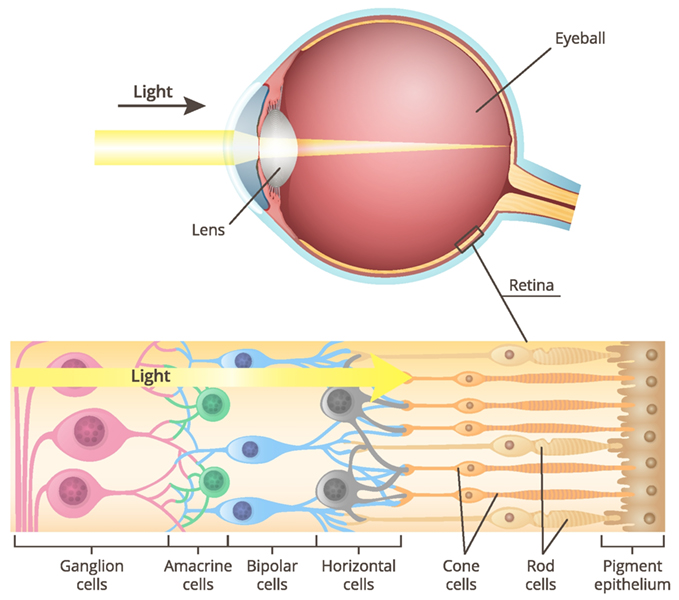Medical Retina
Anatomy of the retina and vitreous:
The retina is the neurosensory tissue lining the inner eye that receives light from perceived images and relays this information to the brain through the optic nerve. The macula is the central portion of the retina and is primarily responsible for color perception and our sharpest central vision. The vitreous gel in the central portion of the eye has a vital role in development of the eye. The vitreous is composed of a matrix of solid collagen fibers and fluid called the vitreous humor. After birth, the vitreous functions to maintain a normal oxygen and nutrient balance in the eye.

Related Pages
Age-Related Macular Degeneration (AMD)
Diseases of the retina and vitreous:
Diabetic retinopathy: Chronically elevated blood sugars from uncontrolled diabetic disease can cause abnormal changes to the retina and retinal blood vessels, called diabetic retinopathy. Diabetic retinopathy is classified into nonproliferative and more advanced proliferative disease. With either forms of retinopathy, microaneurysms can form and leak into the macula, causing swelling known as macular edema. Proliferative diabetic retinopathy results in the growth of abnormal vessels that may further progress to bleeding in the eye (vitreous hemorrhage) or detachment of the retina from the growth and contraction of blood vessels and scar tissue. Diabetic diseases of the eye can be treated with injections of medications into the eye, laser treatment, or vitrectomy surgery.
Floaters: The vitreous gel liquefies as we age, and the solid component becomes more visually pronounced. A sudden worsening of floaters (tiny dots, strands, or haziness) can be a sign of posterior vitreous detachment, a process most common in the elderly where the vitreous separates from the retina. Floaters may also be a symptom of a new retinal tear or detachment.
Macular degeneration: Degeneration of the macula can cause distortion and loss of central vision. There are dry and wet forms of macular degeneration. Dry age related macular degeneration (ARMD) typically occurs more slowly as we age, with atrophy or thinning of the central macula, resulting in central distortion and loss of vision. Vitamin and anti-oxidant nutritional supplementation is important in slowing down this process. Wet age related macular degeneration occurs from the growth of abnormal blood vessels that leak or bleed into or under the retina, causing more rapid loss of central vision. Wet ARMD can be treated with injections of medication into the eye to slow or sometimes reverse vision loss


